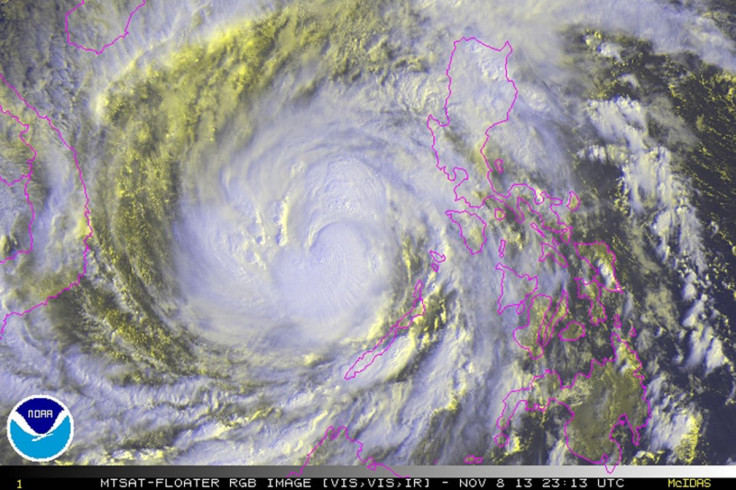Typhoons Slamming Asia Are Becoming Frequent And More Intense, Researchers Say
The impact of warming oceans on fragile marine organisms such as corals is already well-documented. What is less well-known is the effect of warming seas on the intensity and destructive power of tropical cyclones pummeling the coastlines of countries in east and southeast Asia.
In a new study based on data collected by the Joint Typhoon Warning Center — managed by the U.S. Navy and Air Force — and the Japan Meteorological Agency, two researchers have found that over the past 40 years, typhoons in the northwest Pacific have intensified by 12 to 15 percent on average. In addition, the proportion of category 4 and 5 typhoons — those with wind speed between 130 and 156 mph or higher — have doubled, or even tripled, in some regions.
“It is a very, very substantial increase,” lead author Wei Mei from the University of North Carolina at Chapel Hill, told the Guardian. “We believe the results are very important for East Asian countries because of the huge populations in these areas. People should be aware of the increase in typhoon intensity because when they make landfall these can cause much more damage.”

Currently, the global average sea surface temperature is nearly 1 degree Fahrenheit higher than the 1971-2000 average. Sea water closer to land is warming much faster than water in the open ocean, creating a temperature difference that feeds tropical storms.
“If you have warming coastal water, it means that typhoons can get a little extra jolt just before they make landfall,” Kerry Emanuel, a professor of meteorology at the Massachusetts Institute of Technology, who wasn’t involved in the study, told the Verge. “And that’s obviously not good news.”
What this means is that typhoons like Haiyan — a category 5 storm that crashed through the central islands of the Philippines in 2013 and killed over 6,300 people — are likely to become more common in the coming years.
“The projected ocean surface warming pattern under increasing greenhouse gas forcing suggests that typhoons striking eastern mainland China, Taiwan, Korea and Japan will intensify further. Given disproportionate damages by intense typhoons, this represents a heightened threat to people and properties in the region,” the authors wrote in the study.
The researchers stopped short of pinning the blame for warming oceans on anthropogenic climate change, and even cautioned that their analysis of typhoons in northwest Pacific does not apply to other regions.
However, earlier studies have shown that climate change-induced warming is, in fact, making the world stormier. A 2012 paper published in the Proceedings of the National Academy of Sciences analyzed data dating back to 1923 and found that even in the Atlantic Ocean, large hurricanes were becoming more common. In 2013, a study led by MIT's Emanuel found that if global emissions of greenhouse gases continue along their current trajectory, storms in North Pacific and North Atlantic are likely to become both — stronger and more frequent.
© Copyright IBTimes 2024. All rights reserved.






















